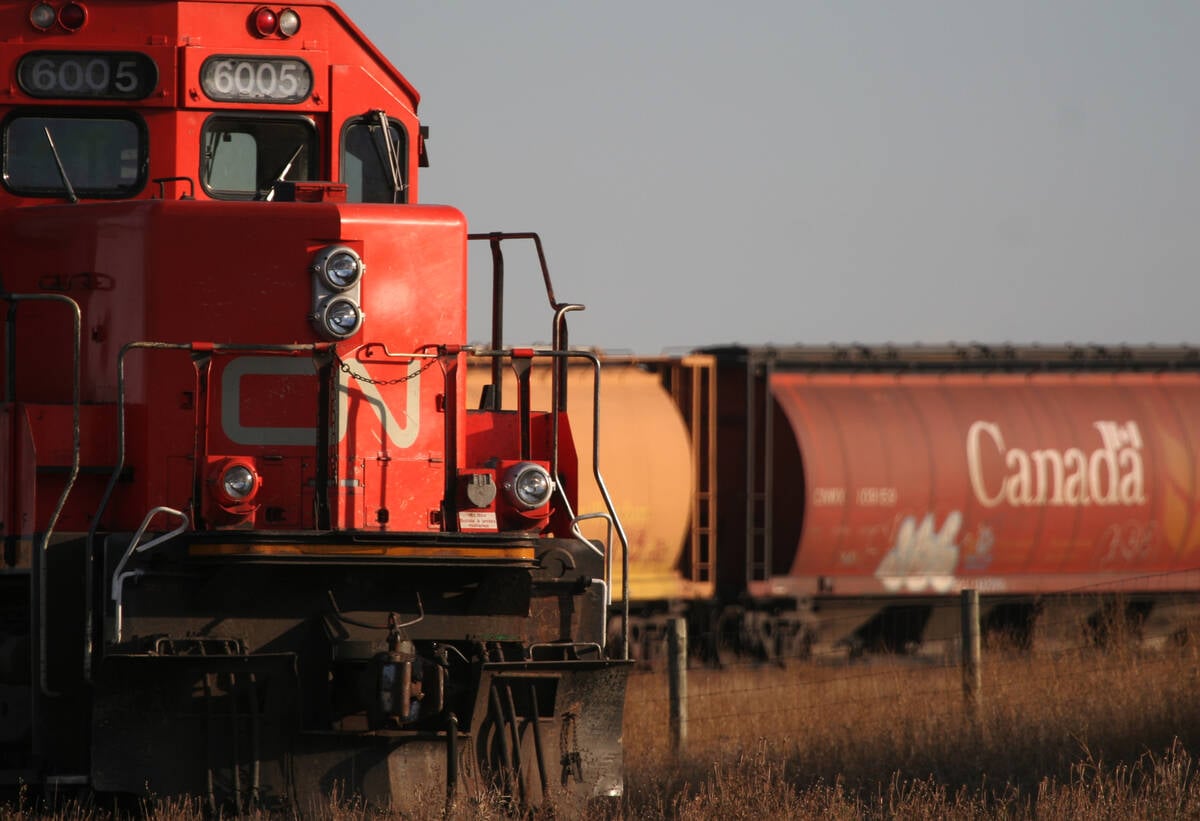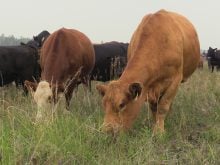This cattle market information is selected from the weekly report from Canfax, a division of the Canadian Cattlemen’s Association. More market information, analysis and statistics are available by becoming a Canfax subscriber by calling 403-275-5110 or at www.canfax.ca.
Production up
Canadian beef production has been increasing, even though the cow herd has not grown for the last five years.
This is partly because of larger carcass weights, although these have declined from record levels set in 2016.
Read Also

Working groups established to address challenges in the containerized and bulk movement of commodities
CN is working with the pulse and special crops sector on resolving challenges in shipping those commodities.
The western Canadian feeding sector is also competitive, and more cattle are staying at home to be processed. There has been a sharp decline in fed cattle and feeder calf exports to the United States, and conversely a large number of American cattle are arriving in the West for finishing.
Cull cow prices have been at a premium to the U.S., so more are remaining at home for processing. Western cow slaughter is up 12 percent over a year ago, while the eastern kill is 16 percent more than 2017.
Cow exports have also declined, but with dry conditions experienced this summer, cow marketings may step up. Non-fed beef production could go up 12 percent.
Nearly 380,000 cattle were exported, down two percent from last year. The majority were fed cattle.
Fed markets moderate
Alberta direct cattle trade was moderate for the week ending Aug. 10, and live prices were generally $4 per hundredweight lower than the previous week from $139.25-$142.50 per cwt. f.o.b. the lot.
The average fed steer price was the second lowest seen so far this year, and heifers were tied for the third lowest.
Packers have satisfactory inventory on formula cattle, and the cash market was softer. Dressed sales were mostly from $237-$237.50 per cwt. delivered, about $7-$8 per cwt. lower than rail trade last week. Weighted average prices were $3.50 per cwt. lower than the previous week but modestly higher than the same week last year.
If packer margins remain profitable and the large kill rates continue, feedlot inventories should remain generally current and weights will be manageable. Ample supplies of formula grid cattle are anticipated for the remainder of August and the cash market is expected to ease lower.
More than 80 percent were sold on a carcass basis.
Western Canadian fed slaughter for the week ending Aug. 4 trended nine percent smaller than the previous week at 40,540 head. However, year to date slaughter figures are seven percent higher than 2017 at 1.1 million head. Carcass weights were up six pounds more than the previous week and slightly heavier than last summer.
Grades showed continued improvement with 59.2 percent ranked AAA, 37 percent AA and 2.4 percent going into the A grade. About 1.5 percent graded Prime.
Feeders variable
Canadian feedlot demand remains strong, reflected in historically stronger feeder basis levels. However, higher barley prices, a weaker futures market and lower fed cattle bids made marketing more challenging last week.
Lethbridge barley was $250-$255 a tonne and feed wheat was $242-$254. Lethbridge corn was $255 a tonne compared to Ontario at $202.74 per tonne.
Dry conditions are affecting grass and forage supplies, so some producers may have to change marketing plans.
Sales volumes are down slightly, but most prices showed double digit improvements over last summer.
Alberta steers in the 500-600 pound class averaged $220.13 per cwt., while the 800 pounders were $205.83. Little or no trade was reported for British Columbia and Saskatchewan.
Ontario 500-600 lb. steers averaged $211.67 per cwt. and the heavier weights at 800-900 lb. were $190.21 per cwt.
Cow and bull market
Cow sales are seasonally lower. Butcher cows and bulls traded $3 per cwt. lower over last week.
In the West, D2 cows averaged $90.80 per cwt., while in Eastern Canada the average was $68.29 per cwt.
Slaughter bull prices are typically higher during the first half of the year with good strength in July and August and declines toward the end of November.
Alberta slaughter bulls have consistently traded at a significant premium to Ontario every month since July 2017.
Canadian bull slaughter has ramped up slowly since 2013 to fill increased domestic demand. Seventy-two percent of total butcher bull sales have been exported for slaughter in the U.S so far this year. Seventy-six percent were exported last year and nearly 90 percent of bulls left the country in 2015.
Beef prices
On July 20, the AAA cutout was $274.18 per cwt. compared to last year at $266.85. The AA cut-out value was $260.02 compared to last year this time at $248 per cwt.
Trim prices are down from last year with 50 percent trimmings at 88 cents a lb. compared to $1.05 per lb. while 85 percent trim was $2.56 compared to last summer when it was $2.67 a lb.














